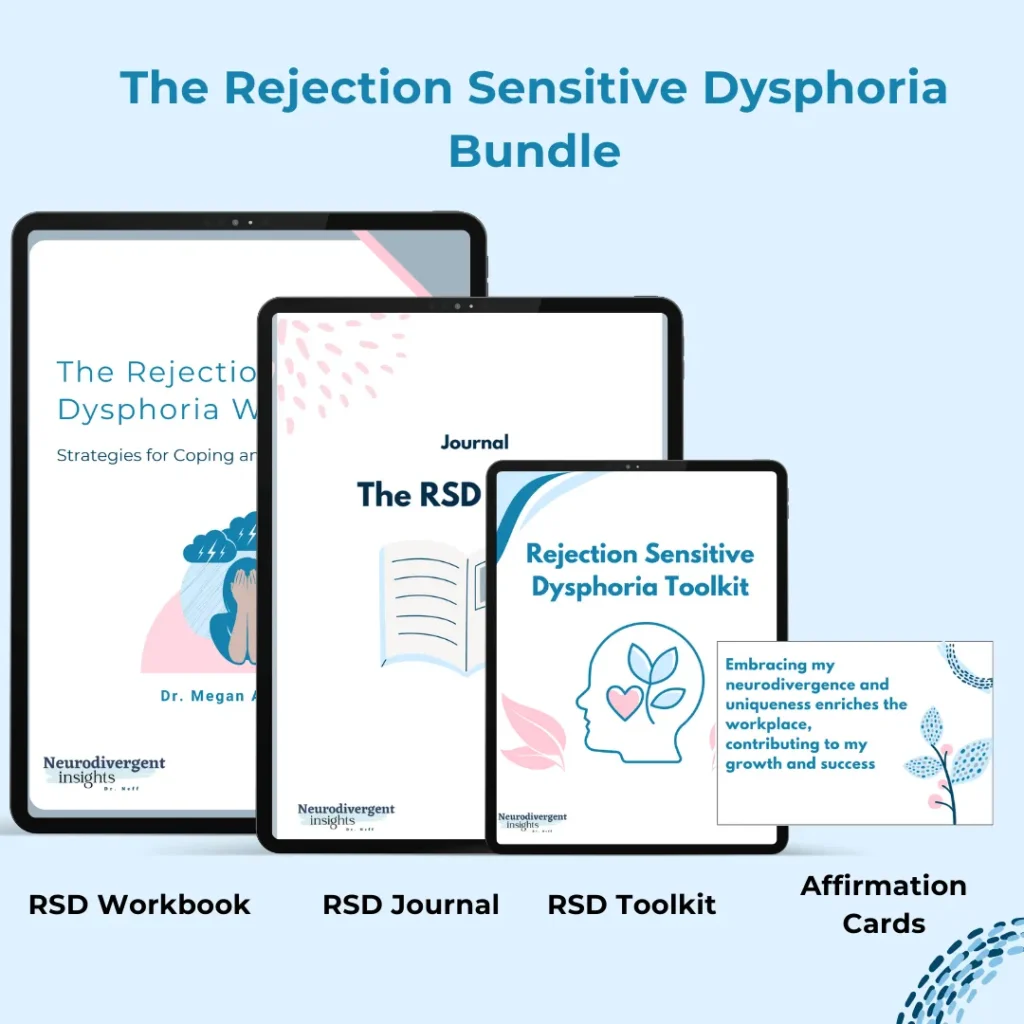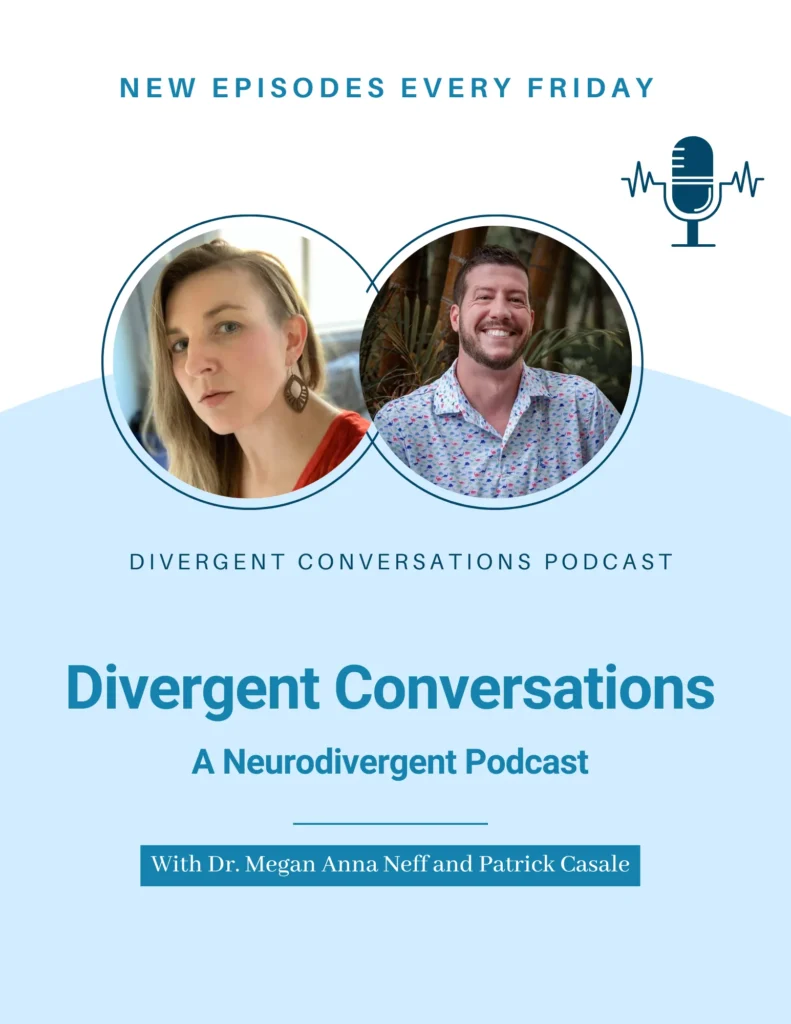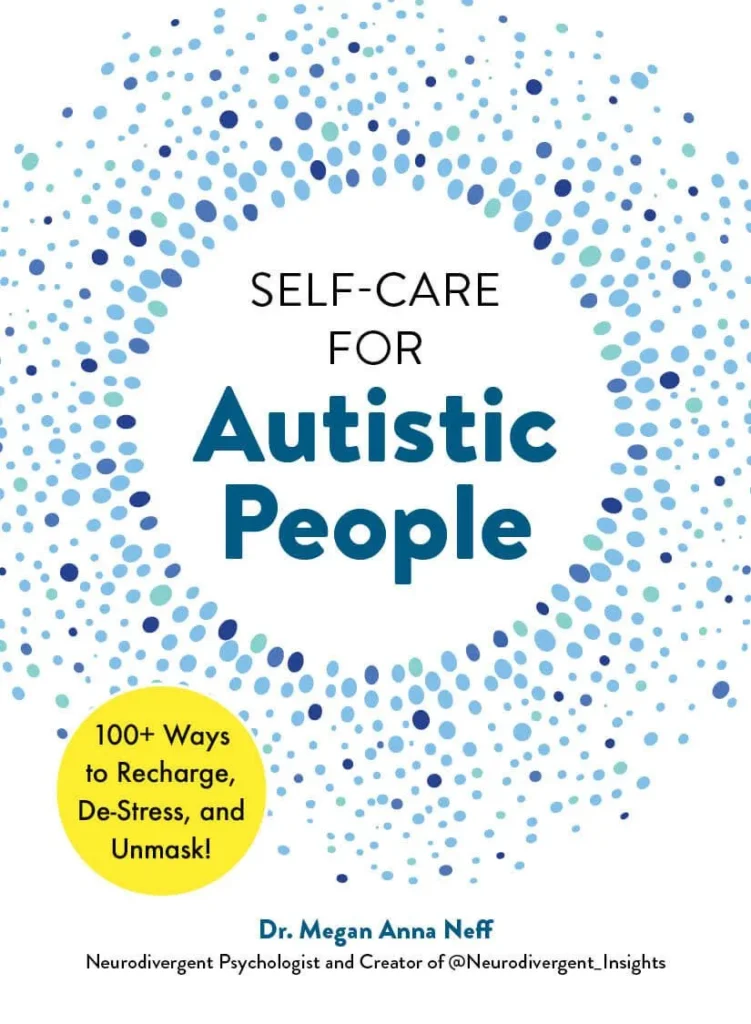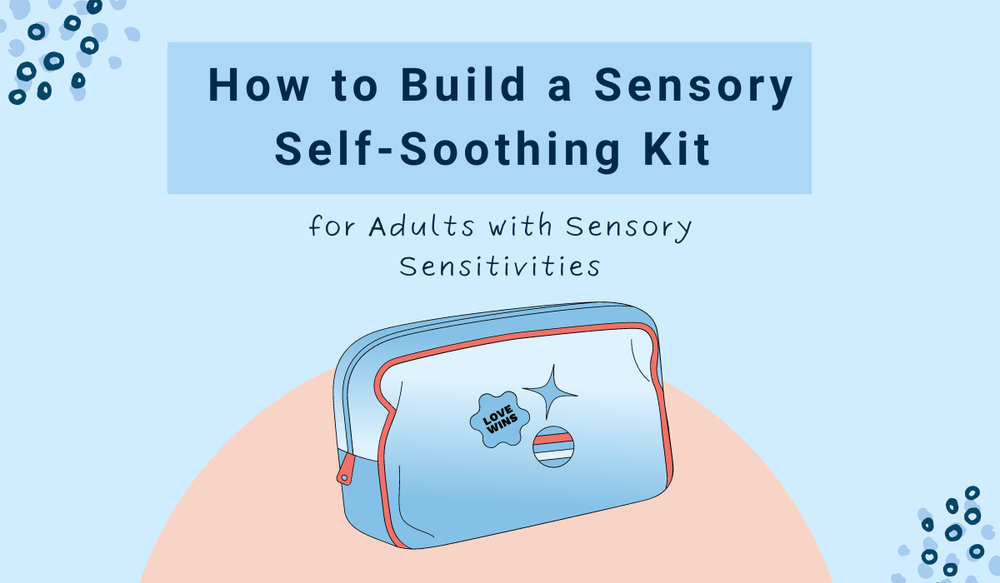
Welcome back to the sensory regulation series. Over the last several weeks, we’ve been talking about how to build sensory safety. Throughout this series, we’ve outlined the importance of cultivating sensory safety, identified the steps to creating a Sensory Safety Plan, explored our sensory profiles (sensory preferences, triggers, and soothers), and discussed how to plan ahead for unexpected sensory emergencies. In our final installment of this series, we wil explore the concept of a sensory soothing kit in detail and take a look at how to build a sensory self-soothing kit for adults. We will discuss:
Sensory Soothing Kit
What is a Sensory Soothing Kit?
Sensory soothing kits are helpful when we’re struggling with sensory overwhelm. A sensory soothing kit is a helpful resource for managing sensory overload inside and outside your home. It provides a collection of items that cater to each of your senses, helping you feel grounded and calm in challenging environments.
You may find it helpful to make more than one kit and keep them in different areas you can easily access, such as in your car or a desk drawer at work.
If you have the space for it, you could even dedicate an area of your home (such as a sensory corner) where all of your sensory items are stored so they’re always available whenever you need them. This can greatly reduce the stress of trying to find them when you’re already feeling overwhelmed.
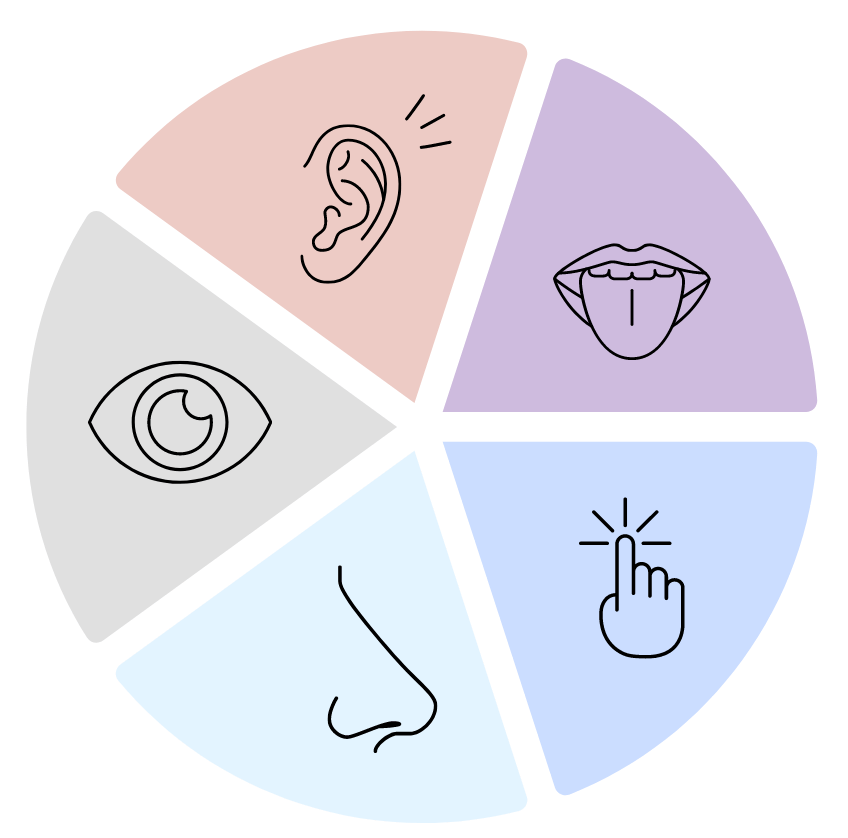
Uses of a Sensory Self-Soothing Kit
While the primary focus of this sensory series revolves around providing support during moments of sensory overwhelm, a sensory self-soothing kit has versatile applications beyond that. Many people find solace and comfort in sensory self-soothing practices when experiencing distress, anxiety, or navigating emotional storms. Here are additional reasons why someone might utilize a sensory self-soothing kit:
Grounding in the present moment: It can serve as a grounding tool, particularly beneficial for people prone to dissociation.
Post-trauma soothing: It offers a way to self-soothe and ground yourself after a trauma trigger or flashback.
Anxiety relief: It can help you to self-soothe in the face of anxiety.
Alternative to self-harm: By engaging with sensory activities provides an alternative activity to self-harm (finding alternative actions is helpful when working to reduce unhealthy coping such as self-harm).
Distraction from distressing emotions or thoughts: It can serve as a diversion from unpleasant emotional experiences or distressing thoughts.
So, while a sensory self-soothing kit is a valuable resource for adults with sensory sensitivities, its benefits extend beyond sensory regulation. It can also assist with emotion regulation and grounding, making it a helpful tool for various purposes.

How to Build a Sensory Self-Soothing Kit
To create your sensory kit, reflect on your favorite sensory soothers and accommodations, considering how each of the five senses contributes to your well-being. Select an item for each sense that resonates with you and helps regulate your nervous system in public settings.
For inspiration, you can revisit the sensory checklists posts to refresh your memory on your sensory preferences and soothers, which may spark ideas for your kit.

Step One to Building Your Sensory Soothing Kit
The first step to building a Sensory Soothing Kit is to find a container to hold your items. This can be whatever you’d like, from a small, discreet pouch to something larger, like a lunchbox or a tote bag. As long as it’s easily portable and can keep your items organized and accessible, it’ll work! Here are a few examples:
A small backpack
A zippered cosmetic case
A storage bin
A compact travel case
A fanny pack
A drawstring bag
A portable tool organizer
A shoebox with a lid
What To Include
Step Two to Building Your Sensory Self-Soothing Kit
Next, you’ll gather things that help soothe you and that will fit in your container. Consider the five primary senses, and for each sense—sight, sound, taste, touch, and smell— think about what sensory input helps you feel calm and grounded.
Visual Sensory Self-Soothers
The contents of your kit will depend on whether you tend to seek or avoid visual sensory input. If you lean towards sensory avoidance, consider including items like sunglasses that can help shield you from unpleasant visual stimuli. On the other hand, if you are a sensory seeker, miniature objects that offer a soothing focal point can be beneficial.

Visual input can also serve as a powerful distraction during overwhelming moments. By immersing yourself in observing the mesmerizing motion of bubbles in a liquid motion bubbler or engaging in a search for the yellow clock in an Ispy picture, you enable your brain to divert attention from other distressing experiences happening around you.
Some suggested items to consider including in your sensory kit are:
- Tinted sunglasses
- Regular sunglasses
- Bubbles
- Liquid motion bubbler
- Mini water games
- Mini spinners
- I Spy cards (Note: I Spy pictures have been particularly effective in helping my children during blood work as a distraction technique).
Auditory Sensory Self-Soothers
When it comes to auditory sensory self-soothing, there are two primary approaches: blocking out excessive auditory input or utilizing specific auditory stimuli for self-soothing purposes. Both methods can be incredibly powerful in promoting a sense of calmness. For instance, listening to a favorite song on repeat with one earbud in can have a grounding and soothing effect. Personally, I find this practice helpful during public speaking engagements or when entering crowded environments like grocery stores or events.
Here are some suggested items to consider for your auditory sensory self-soothing kit:
- Noise-canceling headphones
- Earplugs
- White noise machine or app
- Nature sounds recordings app (e.g., rain, ocean waves, birdsong)
- ASMR (Autonomous Sensory Meridian Response) videos or audios
- Earbuds or headphones with a comfortable fit
- Favorite podcasts or audiobooks that provide a sense of comfort and relaxation
Tactile Sensory Self-Soothers
Incorporating tactile sensory self-soothers into your sensory kit can provide a comforting and grounding experience. These items can help regulate your nervous system and provide a sense of calmness through touch. Here are some suggestions to consider:
- Fidget spinners
- Textured objects
- Soft fabric swatch
- Weighted lap pads
- Stress ball
Taste and Oral Sensory Self-Soothers
Engaging the sense of taste can be a powerful way to focus your sensory experience on a single input and find grounding amidst overwhelming moments. Consider including the following taste-related items in your sensory kit:

- Gum or mints
- Crunchy or chewy snacks
- Suckers
- Toothpicks
- Dark Chocolate
Smell Sensory Self-Soothers
Engaging the sense of smell can create a soothing and familiar scent environment wherever you go. Certain smells have been shown to induce relaxation and a sense of calm. Over time, the brain associates these smells with a state of relaxation, enhancing their calming effect on the body. Consider including the following smell-related items in your sensory kit:
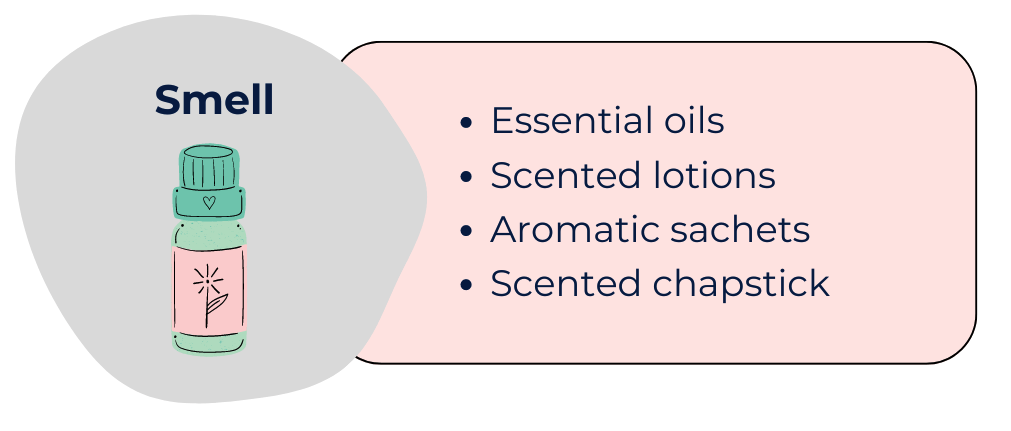
- Essential oils
- Scented hand lotion
- Aromatic sachets
- Scented chapstick
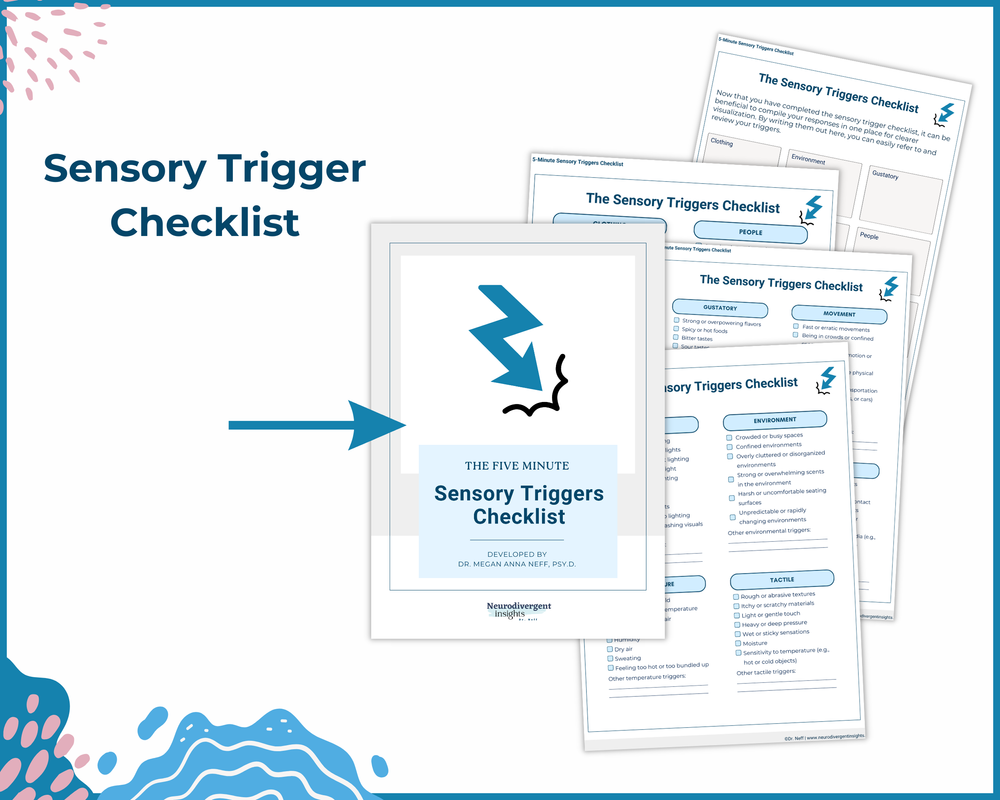
Looking to Expand Your Sensory Self-Soothing Kit?
If you’re seeking additional inspiration for what to include in your kit, don’t forget to consult the sensory soothers checklist for more ideas. It provides a comprehensive checklist of sensory items and experiences that can contribute to your soothing experience.
Additionally, I invite you to download the free PDF resource including 55+ sensory ideas to include in your kit.
Figuring out what works best for you when you are overwhelmed and overloaded will likely take a bit of experimentation and play. Especially if unmasking is new to your or if it is a new diagnosis I encourage you to play with different sensory items to discover what most aligns with your sensory profile.
Conclusion
By gathering these items in a portable bag or container, you’ll have your sensory toolkit readily available whenever you need it. Remember to periodically review and update your sensory kit to ensure it reflects your current needs and preferences. Having this personalized collection of sensory tools at your fingertips empowers you to navigate overwhelming situations with greater ease and comfort.
You are not alone on this journey. Reach out for support, connect with like-minded people, and take agency over your sensory needs! Together, we can foster a world that recognizes and creates space for the diversity of sensory experiences.
If you want detailed guidance on crafting a personalized sensory safety plan, check out the Sensory Safety Plan workbook available here. As part of the ongoing Sensory Regulation Series, the workbook is currently on sale until mid-July 2023. This workbook provides step-by-step directions and practical exercises to support you on your journey toward sensory regulation.





